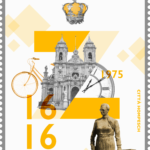
Ideas, Craft and Context – Formulating Meaningful Ideas: Part 1

Some initial thoughts…
Ideas come in all shapes and forms. As designers, we can definitely say that ideas also pop up in our heads in the most random of places. We are very observant, and we are very much inspired by what we see. The challenge for us most of the time is not generating ideas per se, but rather choosing what ideas are deemed worthy. We know better than anyone else that ideas do not work in a vacuum, but rather they are a combination of what we see, feel and experience. Therefore, visualising that first fuzzy idea is very important, otherwise it will never grow into something meaningful. I think that all ideas have potential. The challenge is to put it in the right context.
This week’s lecture
This week’s lecture was a continuation of the interviews with the same designers from last week. This time, they were asked what their source of inspiration was as well as how do they visualise their ideas. All designers seemed to share similar procedures when it comes to ideation and visualisation.
Starting with Christoph Miller from Offshore: being a design duo, they share their ideas with each other. He also made an interesting reference to the book called The Third Mind by William S. Burroughs and Brian Gysin – where he did describe that when two people share their ideas, their two minds make up another one – the third mind. As a studio, they also try to still to a signature style in their work. They draw a lot inspiration from the modernist movements of the 20th century, such as the Swiss style and the Constructivists. Their design style is indeed quite minimal and has that constructed feel. However, Miler did iterate that they also draw inspiration from contemporary art. It is all about looking at works from the past and see how it can be made better for the future generations.
Hey Studios were a bit dry in their answers, although they did stat the obvious. Ideas and inspiration do come from anywhere. Even from a commercial project for a client. Similar to Offshore, when embarking on self-initiated projects, they decide collectively on what they will be pursuing as the next project The guys from Bompas and Parr on the other hand, seem to work the other way round. The allocate ample time for research when they are taking on a new project. In addition, they challenge themselves to come up with an idea before a brief comes it. Seems like an impossible task, however the trick behind such a technique is to document an idea that comes to mind. Regardless of how frivolous or lame it might be, it is good to keep a record of it, as it might be the trigger to bigger and better ideas. An interesting point was raised by the founders here – working under pressure when a brief comes in can be quite stressful, and tight deadlines surely do not make things any better. That said, one needs to understand that not all studios and freelance designers have the luxury of being able to work in such a way and sometimes commercial work can be quite demanding.
I liked how Vince Frost from Frost Collective emphasised the importance of sketching. He referred to himself as being part of the pre-digital generation, however I do not think that today’s technology can ever replace pen and paper. I see a lot of people going straight from research phase to conceptualizing digitally straight away. Also, many people “sketch” on tablets and I just find that so repulsive. It is the most unnatural feeling in the world. By no means I want to reject technology, but I simply cannot fathom how an idea can be developed effectively when your hands and brain are not working in unison. Computers are machines, meaning they give back what you feed them. So if you feed them a lame design so to speak, they will give you an all too accurate version of that lame design, making you hate the potentially good idea instantly and scrap it. In discussion like this, I feel like I was born in the wrong era.
Werkflow are a bit different from the previous four. Firstly, it is because they are the only ones that are working on videogame development, and that branch of design is very vast indeed. Also, they seem to have a bit of a different approach when it comes to their way of working. In terms of inspiration, they have a similar approach to the other design studios: sharing of ideas and merging disciplines to get the best ideas possible. In terms of their way of working, since their main project is the Sovereign videogame, it involves a lot of collaboration. In this case, their key to success is effective and efficient communication between all the stakeholders. That being said, such a project is a clear example of how important it is to have set parameters and good project management.
It was an equally insightful lecture. The upcoming weeks should be really interesting. If it was not for the full -time job, I would actually have time to enjoy working on projects that I have always wanted to work on. I will also be writing about the content in the Resource list for this week. It is a series of presentations from the Walker Art Centre as well as a read from Design Genius, a book by Gavin Ambrose and Paul Harris. I simply did not add it here because the post would be way too long for anyone to read. On to the next one. In the meantime, stay awesome!





